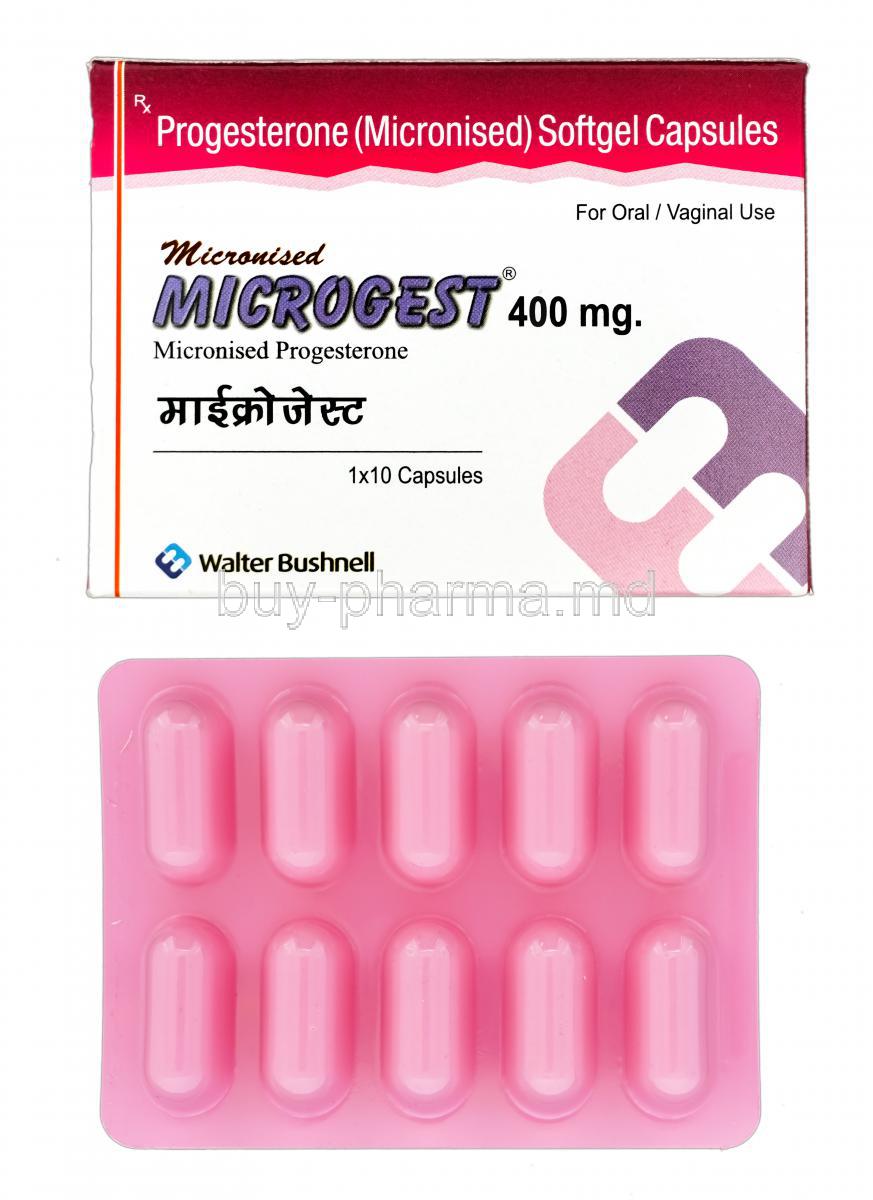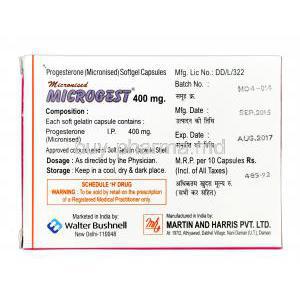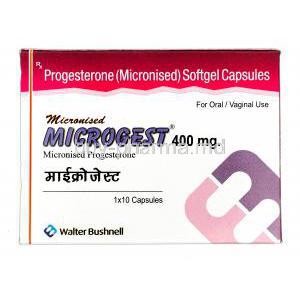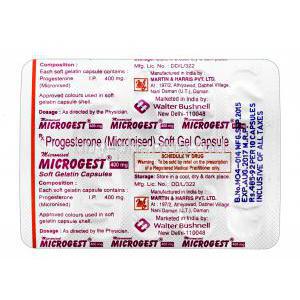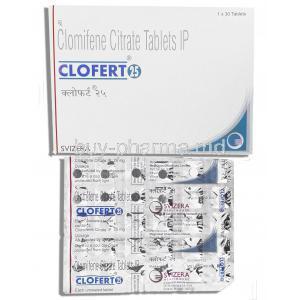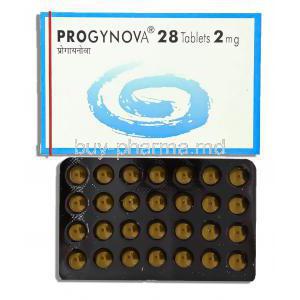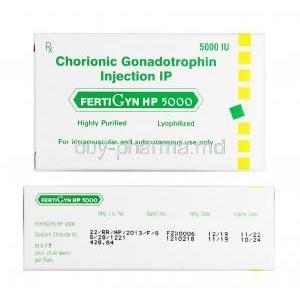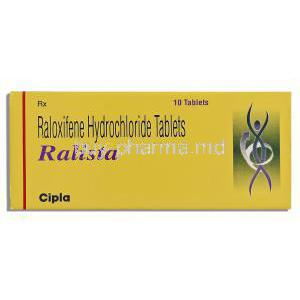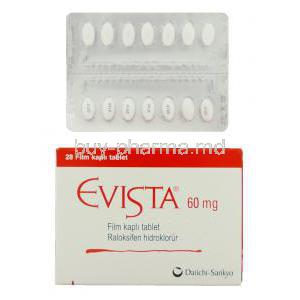1. Introduction to Microgest
Overview of Micronised Progesterone
Microgest contains micronised progesterone, a bioidentical hormone structurally identical to the natural progesterone produced by the ovaries. It plays a vital role in regulating the menstrual cycle, preparing the uterus for implantation, and maintaining pregnancy. Unlike synthetic progestins, its micronised form ensures enhanced absorption and physiological compatibility with the body’s endocrine system.
Clinical Significance of Progesterone Therapy in Reproductive Health
Progesterone therapy is indispensable in treating conditions related to hormonal insufficiency. It restores luteal phase balance, supports early gestation, and mitigates estrogen dominance. Clinicians rely on Microgest to stabilize endometrial function, reduce miscarriage risk, and enhance fertility outcomes, particularly in assisted reproductive protocols.
Historical Development and Pharmaceutical Forms Available
The evolution of progesterone formulations has advanced from crude extracts to micronised, highly bioavailable versions. Microgest is available in multiple forms to suit individual needs:
- Soft gelatin capsules for oral use
- Vaginal capsules and gels for localized delivery
- Injectable solutions for rapid hormonal support
These diversified forms ensure optimized pharmacological response and patient compliance.
Brand Information and Manufacturer Details
Microgest is a trusted brand formulated by leading pharmaceutical manufacturers specializing in reproductive endocrinology. Each batch undergoes rigorous quality control to ensure purity, potency, and therapeutic consistency.
2. Composition and Formulation
Active Ingredient: Micronised Progesterone
The principal component of Microgest is micronised progesterone, refined into ultra-fine particles to improve gastrointestinal absorption and bioavailability.
Pharmaceutical Strengths and Available Dosage Forms
Microgest is offered in multiple strengths, typically 100 mg and 200 mg capsules, along with vaginal gel preparations and injectable ampoules. These dosage forms allow flexible administration across varying clinical indications.
Inactive Components and Excipients
Formulations contain pharmaceutical-grade excipients such as sunflower oil, soya lecithin, and gelatin to maintain capsule integrity and ensure controlled release of the hormone.
Advantages of Micronisation for Bioavailability and Absorption
Micronisation enhances the dissolution rate of progesterone, ensuring rapid systemic absorption and consistent plasma concentration. This process bridges the gap between natural hormone production and therapeutic supplementation.
3. Mechanism of Action: How Microgest Works
Physiological Role of Progesterone in the Menstrual Cycle and Pregnancy
Progesterone transforms the endometrium into a receptive state for implantation. During pregnancy, it suppresses uterine contractions, nurtures the embryo, and supports placental development.
Binding to Progesterone Receptors and Genomic Effects
Microgest binds to nuclear progesterone receptors, modulating gene transcription involved in endometrial differentiation and secretory activity, ensuring a supportive uterine environment.
Effects on Endometrial Transformation and Ovulation Regulation
It stabilizes the luteal phase, preventing premature endometrial shedding. By balancing estrogenic effects, it aids in regulating ovulatory cycles and fertility optimization.
Neurosteroid Actions and Mood Stabilization
Progesterone metabolites act as neurosteroids that modulate GABA-A receptors, producing mild anxiolytic and mood-stabilizing effects. This underpins its off-label exploration for mood disorders and sleep disturbances.
Pharmacokinetic Profile
After administration, progesterone is absorbed through the intestinal or vaginal mucosa, distributed widely, metabolized in the liver, and excreted mainly in urine as pregnanediol glucuronide.
4. Therapeutic Uses of Microgest
- Luteal Phase Deficiency and Infertility: Restores hormonal equilibrium and improves implantation rates.
- Assisted Reproductive Technologies: Provides luteal support in IVF and ICSI cycles.
- Recurrent Miscarriage Prevention: Strengthens endometrial integrity during early gestation.
- Hormone Replacement Therapy (HRT): Balances estrogen effects in postmenopausal women.
- Secondary Amenorrhea: Re-establishes menstrual cyclicity by replenishing progesterone levels.
- Abnormal Uterine Bleeding: Stabilizes the endometrial lining and normalizes menstrual flow.
5. Off-Label and Investigational Uses
Premenstrual Syndrome (PMS) and PMDD
Microgest alleviates cyclical mood swings, irritability, and bloating associated with progesterone fluctuations.
Adjunct Therapy in Endometriosis
By antagonizing estrogen’s proliferative influence, Microgest helps suppress endometrial lesion activity and reduce pain.
Prevention of Preterm Birth
Clinical investigations highlight its role in maintaining uterine quiescence and reducing premature labor risk in susceptible pregnancies.
Neuroprotective and Mood-Regulating Research Applications
Emerging research explores its neuroprotective effects in brain injury and neurodegenerative conditions due to its modulation of neuronal GABA pathways.
Potential Role in Sleep Disorders
Progesterone’s natural sedative and thermoregulatory properties make it beneficial in managing insomnia linked to hormonal imbalance.
6. Dosage and Administration Guidelines
Standard Dosing Regimens
Typical oral doses range from 100–200 mg daily, adjusted according to therapeutic need. Vaginal forms are preferred in fertility treatments for localized endometrial effects.
Administration Schedule
- For luteal support: administered after ovulation or embryo transfer - In HRT: combined cyclically with estrogen therapy - In amenorrhea: given for 10–14 days per month
Timing and Dose Adjustments
Dose modifications may be required for hepatic or renal impairment. Clinical monitoring ensures optimal hormonal balance and therapeutic efficacy.
Instructions for Missed Doses
If a dose is missed, it should be taken as soon as remembered unless it is close to the next scheduled dose. Doubling doses is not advised.
7. Side Effects of Microgest
Overview of General Adverse Reactions
While generally well-tolerated, Microgest may induce mild to moderate systemic effects depending on individual sensitivity and dosage.
Common Side Effects
- Drowsiness or dizziness - Breast tenderness and bloating - Headache or mild nausea
Serious Side Effects
- Thromboembolic complications - Jaundice or hepatic dysfunction - Depression or mood instability Prompt medical evaluation is essential if these occur.
Allergic Reactions
Rare hypersensitivity responses may manifest as rashes, itching, or swelling of facial and respiratory structures.
8. Common and Long-Term Side Effects
Long-term use may contribute to:
- Hormonal mood fluctuations or fatigue
- Gastrointestinal disturbances and fluid retention
- Liver enzyme alterations requiring periodic monitoring
- Weight variation and menstrual irregularities
Consistent follow-up helps mitigate these effects.
9. Drug Interactions
Interactions with Hormonal Therapies
Concurrent estrogen therapy may enhance progesterone’s endometrial effects but necessitates dose calibration.
Influence of Enzyme-Inducing Drugs
Medications such as carbamazepine, rifampicin, and phenytoin can accelerate progesterone metabolism, reducing its efficacy.
Effects of Antifungal Agents and Antibiotics
Azole antifungals and macrolide antibiotics may elevate serum progesterone levels by inhibiting hepatic clearance.
Interaction with Alcohol and Sedatives
Co-administration can potentiate sedative effects, impairing alertness and coordination.
Clinical Monitoring Recommendations
Therapeutic monitoring and dose adjustments are recommended when Microgest is used alongside other hormonal or CNS-acting drugs.
10. Warnings and Precautions
Risk of Thromboembolic Disorders and Cardiovascular Disease
Progesterone therapy, particularly when combined with estrogen, may elevate the risk of thromboembolic phenomena such as deep vein thrombosis, pulmonary embolism, and myocardial infarction. Patients with pre-existing cardiovascular conditions, obesity, or prolonged immobility should undergo thorough assessment prior to initiation. Clinicians emphasize:
- Regular monitoring of blood pressure and lipid profile
- Avoidance of smoking during treatment
- Immediate cessation upon onset of leg pain, chest discomfort, or sudden shortness of breath
Hepatic Dysfunction and Cholestatic Jaundice
Microgest is metabolized extensively in the liver. Patients with hepatic impairment are at higher risk of developing cholestatic jaundice or abnormal liver enzyme elevations. Any manifestation of pruritus, jaundice, or persistent fatigue necessitates discontinuation and hepatic function evaluation.
Caution in Patients with a History of Depression or Mood Disorders
Progesterone influences neurotransmitter pathways and may precipitate mood alterations. Individuals with depressive histories should be closely monitored during therapy. Dose adjustments or discontinuation may be warranted if severe mood swings, anxiety, or depressive symptoms occur.
Tumor Risk in Prolonged Hormone Therapy
Extended exposure to progesterone, especially in combination with estrogen, may be associated with an increased risk of certain hormone-dependent neoplasms, including breast and endometrial cancers. Periodic gynecological and breast examinations are strongly advised.
Importance of Medical Supervision During Long-Term Treatment
Continuous medical evaluation is imperative during long-term therapy. Routine assessments of hepatic, renal, and cardiovascular parameters, along with mammographic and pelvic examinations, are essential to ensure safety and therapeutic effectiveness.
11. Contraindications
- Known Hypersensitivity: Contraindicated in individuals allergic to progesterone or any formulation excipients.
- Thromboembolic Disorders: Should not be administered to patients with active or past thrombotic conditions.
- Severe Hepatic Impairment: Prohibited in cases of liver dysfunction or hepatic neoplasms due to impaired metabolism.
- Undiagnosed Vaginal Bleeding: Requires evaluation prior to initiating therapy to rule out malignancy.
- Known or Suspected Malignancy: Especially contraindicated in hormone-dependent cancers of the breast, uterus, or genital organs.
12. Careful Administration
Monitoring During Therapy Initiation and Maintenance
Frequent assessment during the early treatment phase ensures patient tolerance and detects early signs of adverse reactions. Periodic reviews maintain therapeutic precision.
Dose Titration in Patients with Renal or Hepatic Impairment
Reduced clearance may necessitate lower dosing. Clinical pharmacokinetic evaluation assists in avoiding hormone accumulation and systemic toxicity.
Adjustment in Polytherapy with Other Hormones
When combined with estrogens or gonadotropins, dose coordination is critical to maintain hormonal equilibrium and prevent overstimulation of target tissues.
Observation for Mood or Behavioral Changes
Subtle alterations in emotional stability or cognitive performance should be reported immediately. Clinicians may recommend psychiatric evaluation or dosage revision.
Discontinuation Protocol Under Medical Advice
Abrupt cessation can disrupt hormonal homeostasis. Gradual tapering under supervision minimizes withdrawal symptoms and ensures physiological adaptation.
13. Administration to Specific Populations
13.1 Elderly Patients
Clinical data on geriatric use remain limited. However, metabolic and hepatic function decline with age, warranting conservative dosing. In postmenopausal hormone replacement therapy, Microgest is often administered in conjunction with estrogens to preserve endometrial safety while avoiding excessive exposure.
13.2 Pregnant and Nursing Women
Progesterone supports early pregnancy by stabilizing the uterine lining and preventing premature contractions. It is widely utilized in assisted reproductive protocols.
- Fetal Safety: No teratogenic effects have been conclusively identified when used at therapeutic doses.
- Trimester Considerations: Commonly administered in the first trimester; usage beyond this period requires medical justification.
- Breastfeeding: Small amounts may be excreted in breast milk. Potential effects on infants necessitate physician oversight.
- Lactation Guidance: Discontinuation or substitution may be advised if adverse neonatal reactions occur.
13.3 Pediatric and Adolescent Use
Safety and efficacy data for Microgest in children and adolescents are insufficient. Use is restricted to specific reproductive disorders such as amenorrhea or luteal dysfunction, and always under specialized supervision.
14. Overdosage and Management
Signs and Symptoms of Overdose
Excessive intake may result in somnolence, dizziness, nausea, or mood changes. In rare cases, acute hepatic stress or breakthrough bleeding may occur.
Immediate Management and Supportive Care
Treatment is primarily symptomatic. Induction of emesis is not recommended. Supportive measures include:
- Observation of vital signs and hepatic function
- Correction of electrolyte imbalance if necessary
- Temporary discontinuation of the medication
Long-Term Monitoring
After recovery, hormonal assays may be conducted to assess endocrine stability and ensure safe reintroduction if clinically indicated.
15. Handling and Storage Precautions
Recommended Storage Conditions
Store in a cool, dry environment below 25°C, protected from light and moisture. Excessive heat may degrade the active hormone.
Shelf Life and Packaging Information
Check expiration details on packaging before use. The medication is supplied in blister packs or sealed ampoules to maintain stability.
Handling Precautions for Vaginal or Injectable Formulations
Vaginal capsules should be handled with clean, dry hands. Injectable solutions require aseptic technique to prevent contamination and infection.
Disposal Guidelines
Unused or expired medication must be discarded following local pharmaceutical waste regulations. Avoid flushing into wastewater systems.
16. Important Patient Guidance and Education
Adherence to Prescribed Dosage and Timing
Consistency is critical for hormonal equilibrium. Doses should be taken at the same time daily, following the physician’s regimen.
Avoiding Abrupt Discontinuation Without Medical Advice
Sudden withdrawal may induce hormonal imbalance, irregular bleeding, or emotional disturbances. Medical oversight ensures safe discontinuation.
Recognition of Side Effects Requiring Medical Attention
Seek prompt care for:
- Unusual vaginal bleeding
- Persistent nausea or jaundice
- Severe headaches or visual changes
- Signs of thromboembolic events
Lifestyle Considerations During Hormone Therapy
Balanced nutrition, smoking cessation, and regular exercise enhance cardiovascular resilience and metabolic health during progesterone therapy.
Importance of Follow-Up and Regular Medical Reviews
Scheduled consultations allow physicians to evaluate treatment response, perform necessary laboratory tests, and adjust dosing for sustained safety and efficacy.
Microgest, Micronised Progesterone FAQ
- What is microgest used for?
- Is Microgest 200 a birth control pill?
- Is Microgest 100 safe to use?
- Does microgest 200mg help with fertility?
- Can Microgest cause weight gain?
- Does Microgest require a prescription?
- Can Microgest affect my mood?
- What is the difference between micronized and regular progesterone?
- Can you take micronised progesterone every day?
- What are the benefits of taking micronized progesterone?
- Does micronized progesterone cause weight gain?
- What are the side effects of micronised progesterone?
- What is the difference between progesterone and micronised progesterone?
- Is micronized progesterone safer?
- When to take micronised progesterone?
- How long does micronized progesterone stay in your body?
- What are the benefits of micronized progesterone?
- Does micronized progesterone cause blood clots?
- Does micronized progesterone help with hair loss?
- What is the difference between progesterone and micronized progesterone?
- Is micronized progesterone safe?
- What is the function of micronized progesterone?
What is microgest used for?
The 200 mg MICROGEST capsule is employed to treat amenorrhoea (the absence of periods) and to stave off endometrial hyperplasia (a thickened uterine lining). It is likewise indicated for maintaining a pregnancy, managing threatened abortion, and preventing labor.
Is Microgest 200 a birth control pill?
No
Is Microgest 100 safe to use?
If any of the following apply—breast cancer, unexplained vaginal bleeding, blood clots or a clotting disorder, liver disease, porphyria (a disorder of red‑blood‑cell pigment formation) or cerebral hemorrhage (bleeding in the brain)—avoid taking Microgest 100 mg softgel capsules.
Does microgest 200mg help with fertility?
It could improve fertility for women who are finding it difficult to get pregnant.
Can Microgest cause weight gain?
Yes
Does Microgest require a prescription?
Yes
Can Microgest affect my mood?
Yes
What is the difference between micronized and regular progesterone?
Micronized progesterone is manufactured to possess an architecture that's indistinguishable from the endogenous progesterone circulating in the human body. Conversely synthetic progesterone—commonly referred to as progestins—though capable of producing actions is constructed on a chemically distinct scaffold.
Can you take micronised progesterone every day?
Yes
What are the benefits of taking micronized progesterone?
A lot of women report that micronized progesterone tends to cause side effects and is easier on the body than many other progestogen formulations. It’s proven effective for managing perimenopause in women who also deal with migraine, histamine intolerance, or epilepsy.
Does micronized progesterone cause weight gain?
Yes
What are the side effects of micronised progesterone?
- Headache
- Breast tenderness
- Upset stomach
- Vomiting
- Diarrhea
What is the difference between progesterone and micronised progesterone?
Progesterone resists absorption through the skin or the gut – when it’s micronised (ground into a powder and suspended in oil) and placed in capsule form its uptake is markedly improved.
Is micronized progesterone safer?
Pairing estradiol with progesterone doesn’t appear to raise the risk of clotting.
When to take micronised progesterone?
Bedtime
How long does micronized progesterone stay in your body?
Progesterone levels stay markedly high for twelve hours.
What are the benefits of micronized progesterone?
Micronized progesterone comes across as a therapeutic option largely because its safety record is reassuring—particularly when it comes to breast cancer and venous thromboembolism concerns—and it may be especially suitable for patients who already carry a heightened risk of cardiovascular events and overall mortality.
Does micronized progesterone cause blood clots?
No
Does micronized progesterone help with hair loss?
Yes
What is the difference between progesterone and micronized progesterone?
Micronized progesterone is the hormone reduced to ultra‑fine particles, a tweak that boosts its uptake when taken by mouth. By contrast, "progesterone" can denote the hormone in any delivery form— tablets, injections, vaginal preparations—or at times the synthetic cousins called progestins.
Is micronized progesterone safe?
Yes
What is the function of micronized progesterone?
It is utilized for treating amenorrhea and disordered premenopausal bleeding and is also integrated as a component of hormone replacement therapy.

